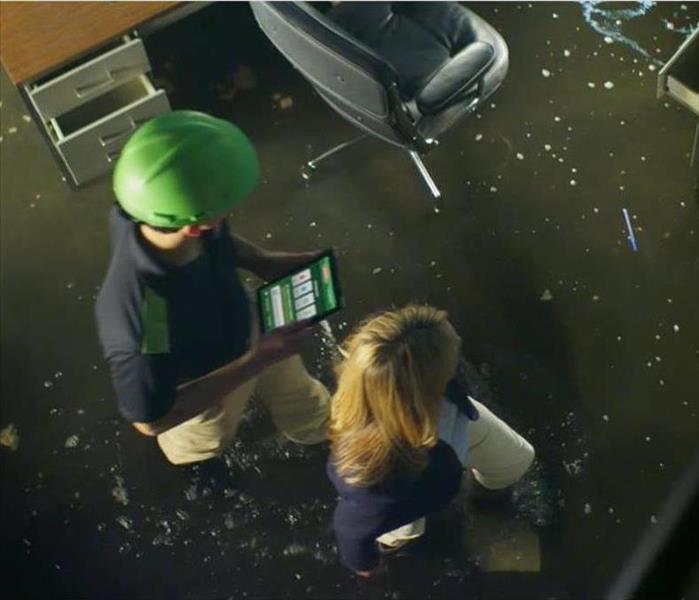The Different Categories of Water
3/7/2018 (Permalink)
What is the Category of Water?
According to IICRC Standard and Reference Guide for Professional Water Damage Restoration (IICRC S500), there are three categories of water that cause damage in buildings. They are summarized as follows:
Category 1 Water (Clean Water)
Water that originated directly from a sanitary source and when exposed to it, either through the skin, inhaled or ingested, does not cause a great deal of harm to humans. Examples of Category 1 Water: broken water supply lines, melting ice or snow, falling rain water, and tub or sink overflows (no contaminates). Category 1 water may become progressively contaminated as it mixes with soils on or within floor coverings or building assemblies (walls, decking, subflooring). Time and temperature, which promote the growth and amplification of microorganisms in water can cause Category 1 water to degrade
Category 2 Water (Gray Water)
Defined as water with bacteria present, but no solid waste, carrying microorganisms and nutrients for microorganisms. Category 2 water does have the potential to cause discomfort or sickness if consumed or exposed to humans. Examples of Category 2 water: discharge from dishwashers or washing machines, toilet bowl overflows (urine, no feces), seepage due to hydrostatic pressure, and sump pump failures.
Category 3 Water (Black Water)
Contains pathogenic agents and is grossly unsanitary which includes raw sewage and other contaminated water sources, such as flooding from sea water, ground surface water and rising water from rivers or streams. Category 3 water is highly contaminated and could cause death or serious illness if consumed by humans.
It is important to understand that when you experience water damage, the longer you wait to begin dealing with the concern, the worse it can get. You should not allow the water to sit because the risk of bio-hazard increases. In short, in 2 to 3 days, category 1 water can turn into category 2 water and eventually category 3 water as other bacteria and pathogens begin to proliferate.
Dealing with the Damage
You must act immediately. Your first step is to call SERVPRO of McAllen to assess the class of water and level of destruction. In the meantime, you should begin all possible mitigation efforts.
According to the IICRC:
Whether insured or not, it is important for property owners to document damage with photographs or video, and immediately begin loss mitigation procedures themselves; or hire a qualified contractor to do this on their behalf. It is totally inappropriate to put off mitigation while waiting for an insurance claims representative to arrive on the scene to evaluate the loss. By that time, in all probability sufficient time will have passed to grow and amplify microorganisms, which may not be covered by insurance. Loss mitigation is defined by insurance policies as “reasonable and prudent measures designed to preserve, protect and secure property from further damage,” including microbial growth and amplification.






 24/7 Emergency Service
24/7 Emergency Service
